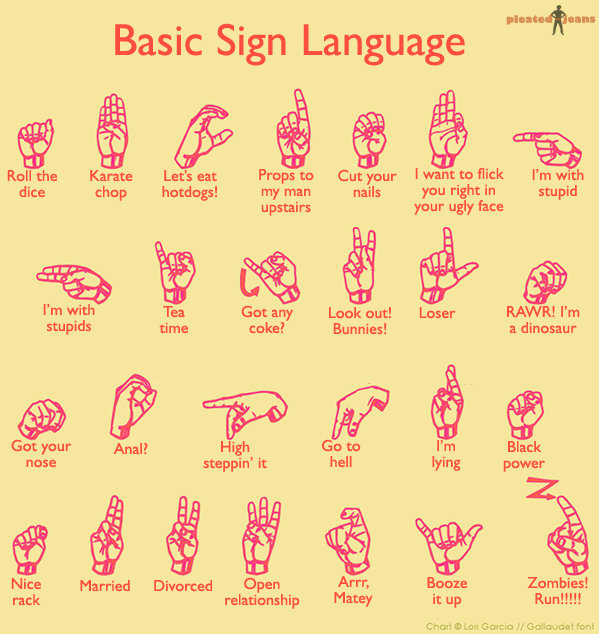

Some signs of phonological variation are acceptable while others with differnet phonetic structure of signs are recognized as mispronunciation.Īnother variation may be due to a register (formal/informal continuum). Phonological variation is not necessarily found in regional variation but in individuals within the same regional community.ĭeaf native-signers can naturally recognize whether a sign is a phonological variation or a mispronunciation. But again, this sign "surgery" is not due to the regional variation but due to the phonological variation, whereas English words "color" and "colour" are due to the regional variation.

This difference is an analogy to the variation of the word "color" in American English and "colour" in Canadian English.

Another example is RABBIT - one with the "H" handshape and the other with the "13" handshape. For example, there are two phonological variants of the signed word SURGERY based on the handshape difference - one with the pinkie ("Y" handshape) and the other with no pinkie ("A" handshape). Phonological variation is a variation in the form of pronunciation. Some variations are common in large regions that native signers are accustomed to. Some ASL signs are particularly local that are different from the rest of the regions. A few ASL signs have larger number of variants such as PIZZA and HALLOWEEN than other signed words. "tube" and "television" or "flat" and "apartment".Ī common type of variation is the regional variation which a few signs are various across the regions. It's not unusual to see variations on the Internet, yet native signers can still understand one another, as the core of ASL is basically the same, just like hearing Americans, Canadians and Britishs are able to converse with one another without any barriers (e.g. That is to say, there are variations across North America. and Canada or Alberta and Minnesota, for example. Variation between California and New York or Alberta and Ontario is generally no more different than between the U.S. Sometimes, a sign was thought to be from a region in Canada also turned up to be also from another region in the U.S. Then, the Internet from the 1990s where Deaf signers have been interacting online, too. Deaf visitors and travelers interacted from all over the places through events, festivals, etc. Plus, Gallaudet University (founded in 1864 formerly as "the Columbia Institution for the Deaf, then Gallaudet College) where students from all over North America attended and came back home with ASL variations. The language grew and spreaded through deaf schools (then residential schools for the deaf), Deaf teachers and students, Deaf families, and Deaf communities across North America. This post focuses on the particular language, American Sign Language (ASL).ĪSL is the primary language of Deaf people across North America long since the old days when the first deaf schools popped up all over North America, starting from the first permanent school for the deaf (1817) in Hartford, Connecticut. There are some types of variation: phonological, regional, gender-related, and few other types. "pop", "soft drink", and "soda" for the same thing or meaning). Variation is commonly defined as "a different way of saying the same thing" (e.g. One of the areas in sociolinguistics that linguists study is variation in language. In sociolinguistics (the study of the relationship between language and society), linguists study interaction between linguistic and social variables and how language is used in various settings and situations. Language naturally changes over time and geography as found in all human languages (both signed and spoken) observed by linguists. General, all Language variation in sign language


 0 kommentar(er)
0 kommentar(er)
